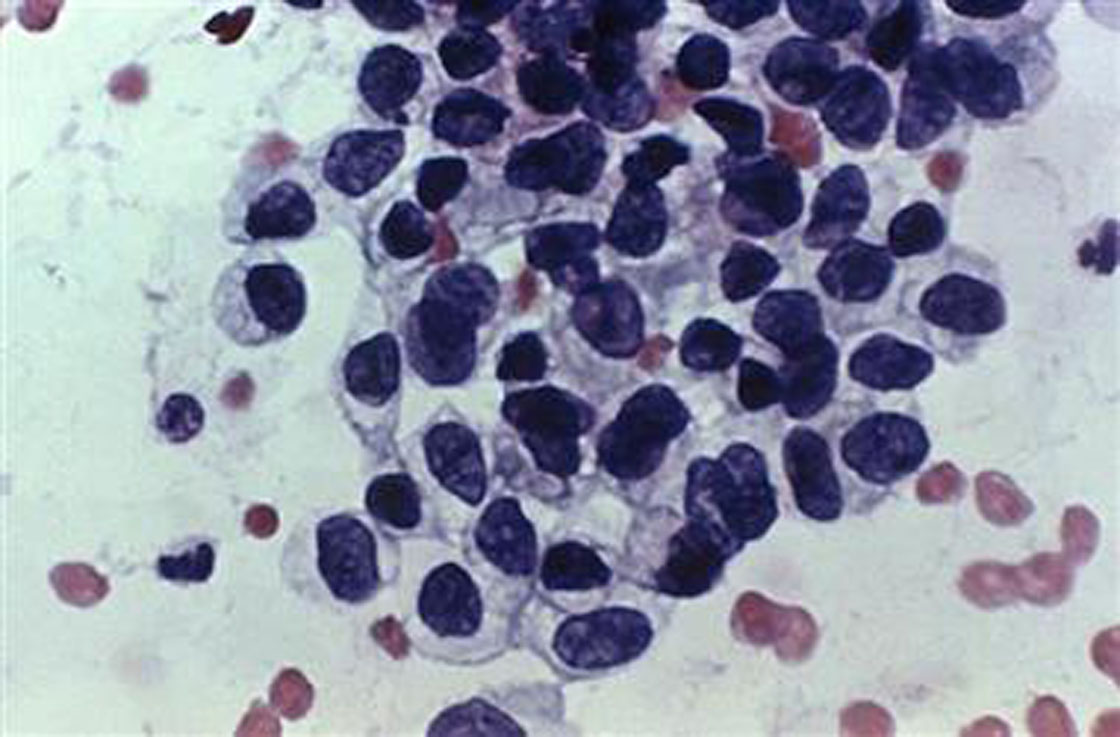TORONTO – Canadian women should be getting Pap tests every three years and starting only at age 25, new guidelines penned by national health experts say.

While rates of cervical cancer and deaths from the disease have dramatically decreased over the past few decades because of this important screening, Canadian doctors now say the test should be conducted at three-year intervals, updating recommendations issued in 1994.
“It is likely that much of the change seen in the incidence of cervical cancer in Canada is due to screening, but early and frequent – often annual – screening is unnecessary,” Dr. James Dickinson said.
“Every three years gets nearly all of the benefits and reduces the harms. Just because a little bit is good, doesn’t mean a whole lot more is better,” he told Global News.
The University of Calgary primary medicine professor is chair of the Task Force on Preventive Health Care, the organization that made these recommendations.
The new cervical cancer screening guidelines authored by the task force were published Monday at noon ET in the Canadian Medical Association Journal.
The recommendations also include:
– No routine screening for women under age 25, including sexually active women
– Routine screening every three years for women aged 25 to 69 years
- Ontario doctors offer solutions to help address shortage of family physicians
- Capital gains changes are ‘really fair,’ Freeland says, as doctors cry foul
- ‘Dangerous message’: Experts slam anti-sunscreen claims circulating online
- As fake Botox cases prompt alert in U.S., Canada says no new issues reported
– Ending screening for women aged 70 and over who have undergone adequate screening – that is, three successive negative Pap test results over the previous 10 years
– Screening for women over age 69 if they have not undergone adequate screening – that is, until three negative test results have been obtained
Still, screening frequency depends on the woman. The report points to women with compromised immune systems, for example, and suggest that they may need more frequent tests.
“Practitioners should be aware of women’s values, preferences and beliefs about screening and discuss these in the context of the potential benefits and harms of the screening process,” the authors write in their report.
Cervical cancer a rare disease in Canada, research notes
The move to relax Canadian guidelines aligns with data that shows a steep decline in cervical cancer deaths.
Across the country, only three women per million among those between 20 and 24 years old encounter the condition. By 25 to 29, the number rises to 9 in 100,000 and of the 30 to 69 age group, 25 of 100,000 women are diagnosed with cervical cancer.
The Canadian Cancer Society estimates that 1,350 women across the country will be diagnosed with cervical cancer this year.
“The important thing is this is not a common cancer like breast cancer. In a lifetime, only 1.5 per cent of women would get this cancer if they weren’t screened,” Dickinson said.
Even then, most women who are diagnosed with the cancer are in their 40s or 50s.
Meanwhile, younger women are getting tested every year, which offers little benefit. Some receive abnormal results on initial pap smear tests that later result in biopsies, treatment and, ultimately, false alarms.
“That causes a lot of harm and time to heal, and at times causes pregnancy loss or an increased risk of it. That’s a pretty terrible thing to do to somebody unless you really need to do it,” Dickinson said.
“So this is a balance we need to work out.”
Most of the time, cervical cancer is caused by human papillomaviruses, an infection transmitted through sex.
After that, it can develop slowly, taking decades to change from an HPV infection into full-blown disease.
Research published last month showed an 83 per cent drop in cervical cancer deaths in Canada, Dickinson notes.
Most provinces recommend against annual Pap tests
Dickinson says the task force understands that some patients may be concerned about getting screened only every three years, but he asks this group to consider the science.
Canada was a pioneer in cervical cancer screening. By 1976, though, research pointed to a change to three-year intervals.
“Somehow, the medical profession never really unlearned the annual screening. The annual pap smear just rolls off the tongue and it’s wrong,” Dickinson said.
Most provinces’ health officials have already suggested two or three-year screenings.
Cancer Care Ontario calls for three-year gaps between testing, beginning at age 21; identical guidelines are provided in Alberta.
Meanwhile, the BC Cancer Agency recommends testing every two years.
Still, the task force’s guidelines are only recommendations made to the country’s primary care doctors.
The organization is composed of an independent panel, funded by the federal government.
It acts as a “judge,” Dickinson explains, weighing medical evidence before advising doctors on what they should be doing.
Canadian guidelines mirror international recommendations
While the task force is now calling for three-year intervals, other developed nations already have these measures in place.
The Canadian task force’s counterpart in the United States calls for screening every three years.
Our guidelines now match British and Irish authorities’ stance on screening times.
But in the Netherlands and Finland, screening begins at 30 years old, the report notes.
The Pap test is the main screening tool against cervical cancer. It detects precursor lesions and can lead to early treatment and better long-term outcomes for women.
carmen.chai@globalnews.ca
Follow @Carmen_Chai
//
-With files from the Canadian Press

Comments